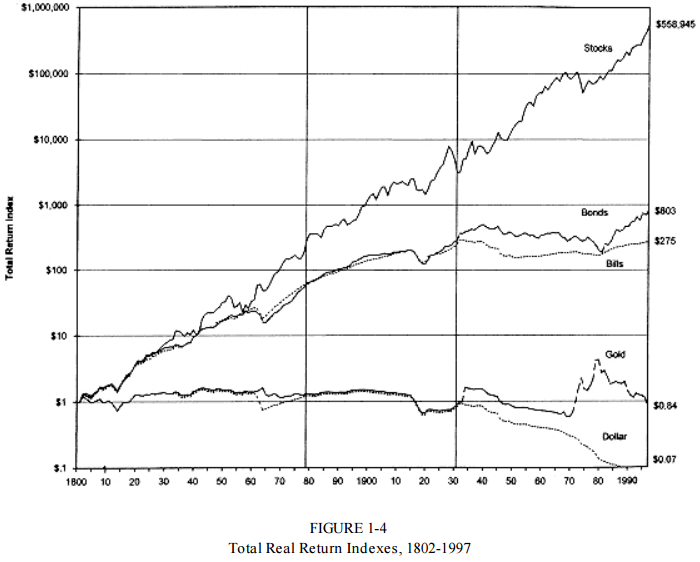Investing is actually pretty simple; you’re basically putting your money to work for you so that you don’t have to take a second job or work overtime hours to increase your earning potential. There are many different ways to make an investment, such as stocks, bonds, mutual funds, real estate or alternative options such as buying whisky as an investment, and they don’t always require a large sum of money to start. There are so few resources dedicated to helping younger, newer investors that I thought it’d be worthwhile to write a quick post outlining five simple steps to help set your priorities and start investing. Let’s keep it easy peasy, shall we?
Step 1: Start Investing: Save money and pay down debt
This one should be obvious, but you’d be surprised at how many people overlook this step. A recent survey from GoBanking found that 69% of Americans have less than $1,000 in their savings account.
If you don’t have cash, you can’t invest. If you have a lot of debt, you’re probably better off paying that down to avoid lofty interest payments before you start investing in the stock market. Sometimes the best investment you can make is cutting down that debt, particularly if it is higher-interest debt (like credit card debt).
The more debt you have, the less flexibility you’ll have should something unexpected arise (which, as you may have noticed, happens in life from time to time). Entrepreneur Mark Cuban summed it up this way:
“The greatest obstacle to destiny is debt, both personal and financial. The more people you are obligated to, the harder it is to focus on yourself and figure things out.”
Reevaluate your debt situation to make sure you are in a position to invest in something other than paying down debt. Once you’ve minimized or eliminated your debt and have some money saved in the bank, move to Step 2.
Step 2: Plan for the long term
Investing is not about trying to “time the market” or “buy low, sell high.” Any money you invest in the stock market should be money you won’t need for at least five years. If you’re younger than 40, you should plan on investing for decades. If you will need this money in anything less than five years, stay away from the stock market.
In the short term, the stock market is volatile and chaotic. People will always find something to worry about or chase the new shiny object, pushing stock prices up and down at dizzying speeds. It’s easy to get caught up in the short-term hubbub, which is why it’s critical to start investing with the right mentality at the beginning of your investing journey.
Over the long term, the stock market becomes a much different story. In Stocks for the Long Run, Jeremy Spiegel shared this chart comparing the performance of stocks, bonds, and gold between 1800 and 1997:

Adjusted for inflation, $1 invested in stocks in 1800 was worth $558,945 by 1997. The same amount invested in bonds was worth $803, and gold was worth $0.83. Remember that the stock market’s remarkable long-term performance is despite a plethora of recessions, a Great Depression, the Civil War, two World Wars, numerous public health outbreaks, assassinations of presidents, and a host of other negative events over the past two centuries. Over the long term, the stock market is arguably the most resilient investment vehicle at our disposal.
Morals of the story: Stocks are among the greatest long-term investments around, and investing in gold (or other forms of rocks and minerals) usually hasn’t worked out very well.
However, you’re unlikely to benefit from stocks if you don’t hold them for many years and, eventually, decades. This is why planning for the long term and tuning out the short-term headlines and noise are critical to being a successful investor. Buying stocks is easy; holding onto them when people are worried about the next recession or gizmo or ebola/flu/scurvy outbreak is the hard part.
Step 3: Open a brokerage account
Now we’re getting practical. You can buy and sell stocks through a brokerage account, which is like a bank account where you can trade stocks. Opening a brokerage account can be done online and isn’t much different than opening a bank account. There are a wide variety of “discount brokerages” online, most of which charge between $5 and $10 every time you buy or sell a stock. Some, like Robinhood, don’t charge any commissions or fees for trading stocks.
If you’re looking for bonus points, you should set up a Roth IRA (Individual Retirement Account) within your brokerage. Roth IRAs minimize your tax expenses in a powerful way. Your money is taxed as you transfer it into the Roth IRA, but the money you withdraw from the Roth IRA as you enter retirement won’t be taxed. In other words, a Roth IRA is a quick-ticket way to set yourself up for tax-free income in retirement.
The first step, though, is opening a brokerage account. Look into a Roth IRA once you have your bearings and are ready to amp up your investing game. (We’ll share more on Roth IRAs in a future article, too.)
Step 4: Buy Low-Cost Index Funds
As you’re starting out, always aim to keep it simple and keep your costs low. You don’t need to invest in obscure companies or things you don’t understand. Mutual funds are where a lot of people typically start investing, but most mutual funds actually perform poorly and have higher expenses than you should pay.
Mutual funds are “actively managed” by a person or group of people, so when you start investing in a mutual fund you are paying people to manage the fund for you. This is why mutual funds have higher annual fees averaging about 1.25% (meaning you’ll pay that percentage of your invested money every year).
However, most mutual funds don’t outperform the S&P 500, which simply tracks the 500 largest companies in the U.S. In fact, more than 90% of mutual funds fail to outperform the S&P 500 over a 10-year period. When it comes down to it, mutual funds just aren’t worth the higher expenses.
Instead, start with an index fund, which automatically tracks indexes of companies (like the S&P 500). Since an index fund isn’t actively managed by anyone, the annual expense is closer to 0.25% on average.
In short, index funds typically cost less and perform better than mutual funds. As you’re getting started, just ignoring mutual funds and sticking with index funds increases your odds of long-term success. Vanguard has a lot of low-cost options that track the S&P 500, which is a great place to start.
Step 5: Strat Investing regularly, sit on your hands, and enjoy life
Once you have a brokerage account (and a Roth IRA!) set up, try to invest on a regular schedule. It could be every month with your paycheck or even just once or twice a year but set up an automatic system to invest in regular increments on a set schedule. This is called “dollar-cost averaging,” and it is very powerful when you keep it up for years and decades. Dollar-cost averaging ensures you will continue to invest money in regular increments through the inevitable ups and downs of the stock market, and lessens the risk of investing all of your money at once.
Investing should be simple, low-cost, and largely automated. Stay away from something you don’t understand or are unsure how much you’re being charged. Starting with the five steps outlined here will get you set on the right track.
The Takeaways
At the end of the day, your success as an investor will largely come down to these points:
- Save money regularly and lower/eliminate debt.
- Keep your costs (including taxes) low by investing in low-cost vehicles like index funds.
- Plan on holding your investments for an absolute minimum of five years.
- Invest your hard-earned money on a recurring schedule (dollar-cost averaging).
- Be patient and sit on your hands even when everyone else is freaking out about the world.
- Repeat 1–5.
Your future self in 30 years will thank you.


